Wednesday to Sunday 22-26 September 2021
Your chance to explore by far, one of the most exciting lost villages in all of East Sussex – and be entertained among the ruins.
The Tide Mills Project has commissioned nationally acclaimed artists, designers, sculptors, poets, musicians, and writers to work with the local community and recreate the lost village.
Live events during Heritage Celebration Week
Don’t miss the big culmination of the artists’ work with 5 days of free live events every evening, 5pm to 10pm, from Wednesday 22 to Sunday 26 September.
Everyone is invited to come down to Tide Mills:
- walk around the many wondrous art installations and dramatic reenactments which bring the lost village back to life
- listen to some great music
- book a tour round the archaeological site of the lost village.
The live events are free and accessible for all, but for some events you will need to book a place:
There’ll be food available every evening by the live entertainment tent.
And the Tide Mills choir, specially formed for the project, will kickstart the musical events each night with some original songs inspired by the history of the place, as well as older songs of the sea.
On finale night on Sunday 26 September, there’ll be a spectacular closing event around the firepit.
Scroll down to find out how to get to Tide Mills and parking.
The music
- Sam Lee
- The Copper Family
- Ellen Muriel, leader of the Tide Mills choir
Mercury Music Prize Nominee, Sam Lee, will close the Tide Mills Celebratory Week with a special concert, Singing with Waves on Sunday 26 September.
Lee’s rich baritone voice carries the imprint of folk past – no one does “unaccompanied” better. The Guardian
The legendary folk singers, The Copper Family of Rottingdean, will present a concert entitled Sussex Song on Saturday 25 September, as well as providing soundscape elements for the Tide Mills Project.
The Copper Family have been collecting and singing Sussex songs for generations, lovingly preserving them for the future.
The Tide Mills Community Choir, led by Natural Voice choir director Ellen Muriel, will perform every evening at 7.30pm, Wednesday 22 to Sunday 26 September.
“It has been an absolute joy to work on such a unique project! Residents of the local area have been meeting throughout September, coming together to learn a repertoire of sea shanties, circle songs, folk melodies and protest chants directly inspired by the history and landscape of Tide Mills.
Come along and see for yourselves: catch us at 7.30pm every evening – a chance to bathe in sound waves of celebration, for the past and present of this extraordinary place!”
Other highlights from talented local musicians include:
Colin Chapman’s themed set inspired by Tide Mills and Sussex folk music, Nigel Goss’s specially composed soundscape creating the atmosphere of historic Tide Mills, to enhance visitors’ experience as they walk around the site, and performances for small gatherings by the three-piece acoustic band, The Kites.
- The Kites
- Colin Chapman
- Nigel Goss
The installations among the ruins
High-definition 3D installation: Art Lewry and Jack Beccegato, with assistance from a drone pilot Gary Bruggenwirth, are mapping the whole site in high-definition 3D. Art and Jack are creating an augmented reality landscape for visitors to explore, overlaying historical buildings and artefacts onto the current landscape.
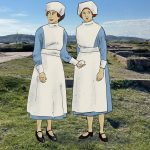
Bringing lost village back to life!
Filmspot is creating Arrivals and Departures, ghost-like animated depictions of characters from the past at Tide Mills, to be shown on screens around the site.
Scenic artist Romy Loughman, and illustrator Rachel Cunningham, are recreating the Stationmaster’s Cottage as a theatre set. Local school children have helped paint the textures of the cottage. During the celebratory week, the Station Master’s Cottage will be brought to life by actors impersonating historical characters, welcoming visitors to the site.
Abbie Stanton is making a giant rotating 3D Zoetrope, on the site of the stables run by David Dale for racehorses in the 1920s. Abbie is fashioning horse sculptures from willow to create the animated illusion, working with community members of all ages.
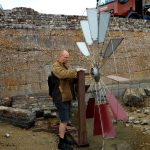
Christian Funnell testing out his water wheel installation
Christian Funnell is creating Tide Mills Natural Calendar, a large metal water wheel, powered by the remaining tidal flow, where the sluice to the old mill was situated. Each revolution will display different species of flora and fauna connected to the site.
Listening Sleepers is Christian’s second project, a collaboration with sound artist Hal Wheeler, at the Chailey Marine Hospital site. The construction of multiple beds, complemented by a soundscape, will utilise transducer microphones so that the listener hears sounds reflecting the children who were treated here.
Hal is also independently creating another installation, Tide Light, Milled, and will be using LED pixel mapping alongside other lighting effects to create the illusion of movement on a scaffolding structure at the site of the mill. He is also planning workshops with the community.
Guyan Porter is creating Tide Mill Waves, a lighting illusion of the mill pond filling and emptying. He is also planning Tide Wave Radio, at the site of the Seaplane Station, to be run by members of the community over the celebratory week.
Kittie Kipper is currently teaching hundreds of school children and community groups are currently making Ghost Net Weaving, an art installation of woven circles using netting recovered from beach cleans, to continue on-site during the celebratory week.
Book now
Don’t be disappointed: for some events you will need to book a place:
Funding
The Tide Mills Project is a creative heritage project, backed by National Lottery Heritage Fund, Arts Council England and the South Downs National Park Authority. It is also supported by Sussex Community Foundation, Cheesmur Sussex Building Contractors and the Rampion offshore Windfarm, among others.
Why is it called Tide Mills?
Tide Mills is a derelict village on the coast, about 2km south-east of Newhaven. Although it is now a quiet wildlife sanctuary, Tide Mills was once a hubbub of industry and village life, founded on the construction of a tidal mill in 1761 – hence the village’s name. It was only abandoned about 80 years ago.
The tidal mill used the power of the tide to turn the water wheels, which then turn the mill stones to grind wheat and corn. As the tide came in, water flowed into millponds via sluice gates. As the tide went out, water was relased from the millponds and through the archways, which drove the water wheels in the mill.
The way people lived changed a lot over the life of Tide Mills, especially when the tidal mill stopped working for good in 1883. The mill, which provided work for so many men, had stopped and the beating heart of the village never recovered.
Also still visible on the site are archaeological vestiges of 1920s stables for lame racehorses and the Chailey Heritage Marine Hospital for boys, the Royal Naval Air Station (WW1) for seaplanes, and a Marconi radio station (1904).
Standing among the ruins you can imagine all those past lives.
- Villager, David Geering, with his son
- Tide Mills family
- Chailey Marine Hospital for boys
The information panels that you can see around the site were funded a few years ago through a grant from East Sussex County Council’s Newhaven Community Fund.
Find out about more about the fascinating history of Tide Mills, wonderfully brought to life on the Tide Mills Project website.
Walks
The surrounding Tide Mills area is a hidden gem for walks, with lovely coastal views from the beautiful downland hills.
The area is an important area for birds, lying next to the Ouse Estuary reserve but having tidal waters in the old mill creek and mill ponds.
Tide Mills is now a designated Local Wildlife Site, part of the South Downs National Park. Typical plants include Sea Kale and Yellow Horned Poppy. It is home to many rare birds, including Ringed Plover, Black Kite, European Bee-Eater and Short Eared Owl, as well as butterflies and grasshoppers, common lizard, slow worm and grass-snake.
In 1864, the railway network extended to Seaford and a siding was laid right through Tide Mills. You can still see the old railroad tracks along the main footpath.
See the East Sussex County Council website for a collection of circular walks, including the Bishopstone walk passing through the Ouse Estuary Nature Reserve and Tide Mills.
- View towards Seaford
- Wild life among the ruins
- Taking a tour around Tide Mills
Where is Tide Mills?
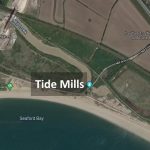
Map showing Tide Mills
This precious and somewhat mysterious place, is on the East Sussex coast between Newhaven and Seaford. See location on Google Maps.
Getting there
The walk from the bus stops or from the car park will take you on a track with a footpath that crosses the railway. At the footpath crossing, there’s a gate on each side of the railway line. Train drivers sound their horn as they approach but take care to ‘Stop, Look and Listen’ for a train before opening the gate.
By train
Tide Mills is a lovely 15-minute walk from either Newhaven Harbour station or Bishopstone station, or a bit longer from Seaford station.
By bus
The 12 or 12A buses from Brighton and from Eastbourne.
By car
Access is from the A259 at Mill Drove between Bishopstone and Newhaven.
Ample free car parking will be provided for visitors to this event, in a field next to the Tide Mills Site, entrance via a gate next to the main Tide Mills Car Park (on Mill Drove). A friendly stewarding team will help you park safely. The free council car park will still be available for use but has a limited number of spaces.
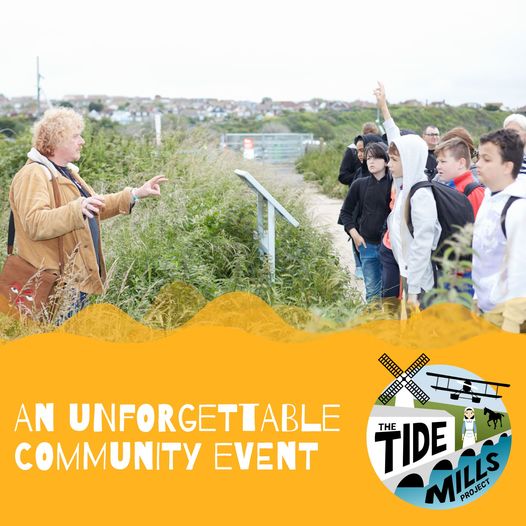
The Tide Mills Project – an unforgettable community event. Don’t miss it!
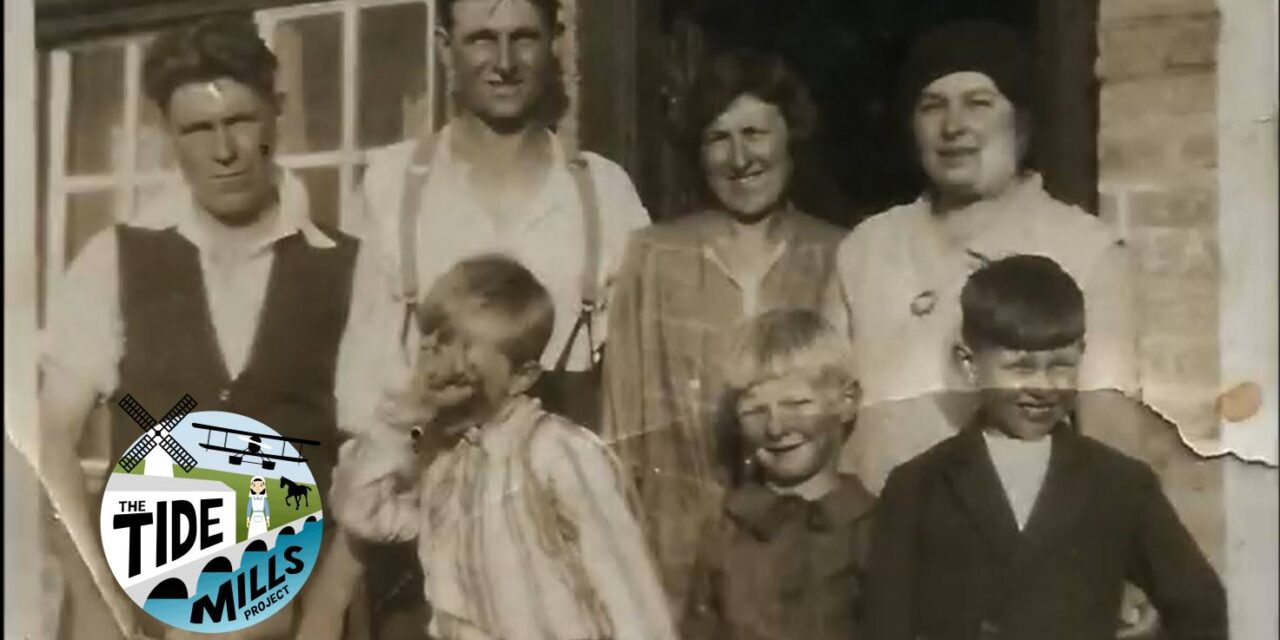

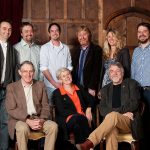




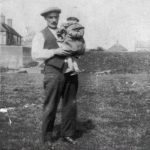
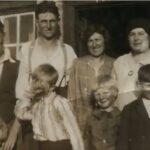

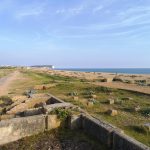
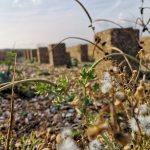




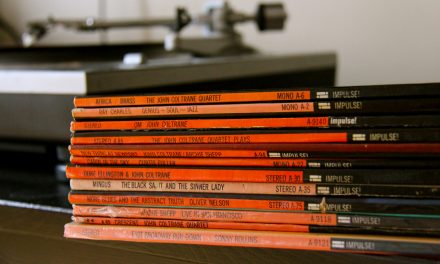
Your links on how to book to see this are not working
Hi Steve, thanks for message. I’ve checked the links on our page and they appear to be working. Most of our links take you to the Tide Mills Project website. Are you having a problem getting to the Tide Mils Project website from our page? Or do you encounter the problem once you get to the Tide Mills Project website? Many thanks, Lesley